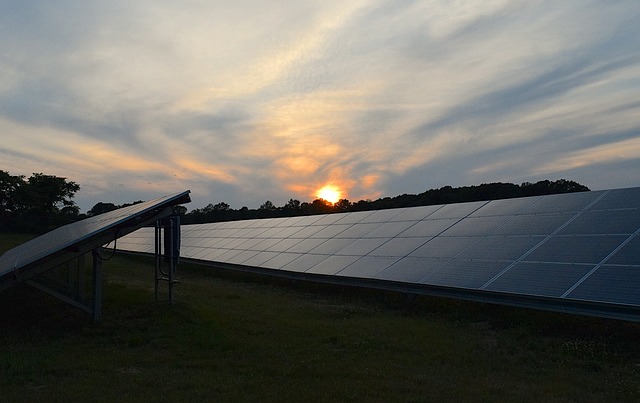Contents
- Solar panels convert sunlight into energy.
- Other solar panel technologies:
- Cadmium Tellurium Solar Panels (CDTE):
- Copper Indium Dieseline Solar Panels (CIGS):
- Organic Photovoltaic Cells (OPV):
- Inverters convert the energy from solar panels into usable electricity:
The solar energy is generated when the solar light incident on the solar panels, which then convert solar energy into electricity suitable for our homes. This photovoltaic transformation is the way to produce solar energy. In this post, we will take an in-depth look at how a home solar system harnesses the sun’s energy.

Solar panels convert sunlight into energy.
The process of producing solar energy begins with the most important part of a solar installation: the solar panels. A typical solar panel is made of mono crystalline and polycrystalline silicon housed in a metal frame with a glass shell.
When sunlight hits the thin layer of silicon on top of a panel, it releases electrons from the silicon atoms. Electrons are negatively charged, which means that they are attracted to one side of the silicon cell. This creates an electrical current that is captured by the wiring of the solar panel.
Known as the “Photovoltaic effect” the flowing electrons released by sunlight are the basis for the electricity generated from solar panels. The more rays of the sun hitting solar panels, the more electrons will be left free, so it is important to consider factors such as shadows or local cloud cover when designing a solar power system.
Different solar panels produce electricity at different speeds depending on their efficiency and quality. High-quality solar panels will often cost a bit more, but in the long run they will save you more money because they produce electricity more efficiently.
Other solar panel technologies:
Most of the solar panels available are made of crystalline silicon, but there are a few other types of solar panels that also produce electricity from the sun. All of these solar technologies fall under the umbrella of thin film panels, and they are a very small part of the overall solar energy market.
This is mainly because they are not profitable today. In the future, these options may be the technologies that dominate solar power, but for now silicon solar panels are the owners of the industry.
Cadmium Tellurium Solar Panels (CDTE):
CDTE panels use a material other than silicon to produce electricity. While they don’t have very high efficiency ratings yet, CDTE panels can capture solar energy at shorter wavelengths than silicon panels. Furthermore, the manufacturing costs are low.
Copper Indium Dieseline Solar Panels (CIGS):
With higher efficiencies than CDTE panels, CIGS panels are a promising panel option. Unfortunately, high production costs have prevented the CIGS panels from reaching the general public. CIGS panels use a different copper-based material to generate electricity.
Organic Photovoltaic Cells (OPV):
Rather than using an inorganic material like silicon or copper, OPV cells use thin layers of organic vapor to generate an electrical current from sunlight. OPV cells have not yet been widely used due to low efficiency and short lifespan compared to other panel technologies.
Inverters convert the energy from solar panels into usable electricity:
How to produce solar energy? Once the loose electrons have been collected in individual panels, the resulting current is known as direct current (DC). The electricity we use to mobile, computers, electric vehicles or turn on the lights in our house is alternating current (AC). So this electricity obtained in solar panels must be converted into alternating current to be consumed.
This conversion is done by devices called inverters, which can be configured as string inverters, micro inverters, or power optimizers, but each configuration performs the same general function: converting DC electricity to AC electricity. Once the conversion is done, the electricity can already be consumed in the home or circulated through the electrical network.

















+ There are no comments
Add yours